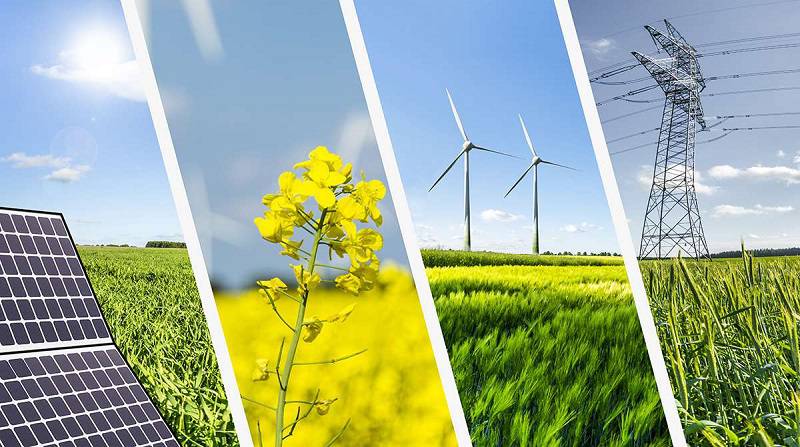Top Renewable Energy Sources

Renewable energy is inexhaustible. They are endless and can be generated endlessly in nature. In the present time where energy is from other sources is depleting, renewable energy is the best fit for a safe future. Renewable resources can be used repeatedly and does not run out because it is naturally replaced and has an endless supply such as solar energy, wind energy, and geothermal pressure. Let us look at the top ten types of renewable energy or renewable resources also known as non-conventional energy that will help us understand the importance of these sources.
Solar Energy:
Solar energy gathers the energy of the sun by using collector panels to create environments that can then be transformed into a kind of power. Solar energy is surely abundant however, it has a collection efficiency of only 10%. The solar thermal route uses radiation as heat that may be converted to mechanical, electrical or chemical energy.
Wind Energy:
Wind energy is becoming a common renewable energy in the present times. New innovations that let wind farms to be visible are making them a more common sight. Wind is used as the power to turn large turbines, that can then turn a generator to produce electricity. Although this might seem a perfect solution, wind energy can have ecological effects that make this form of energy not so ideal.
Hydrogen Energy:
Evidently, Hydrogen is the most common element on the earth. It is available in water (H2O). When hydrogen is separated, it can be used as a fuel for generating electricity. It is a highly efficient source of energy and can be utilized as a source of fuel to power ships, vehicles, homes, industries and rockets. It is a renewable energy, and it does not leave toxic emissions after it is produced as per requirement.
Tidal Energy:
The rise and fall of tides to convert kinetic energy of incoming and outgoing tides into electrical energy is called tidal energy. This renewable energy mostly available in coastal areas. Tidal energy requires huge investment and limited availability of sites which can be its disadvantages. Tidal energy is an efficient form of renewable energy that can produce large energy even when the tides are at low speed.
Geothermal Energy:
Geothermal energy is produced from the heat emitted from the earth. Main features of it are that it is clean, sustainable and environment friendly. By the slow delay of radioactive particles, high temperatures are produced continuously inside the earth’s crust. Hot rocks present below the earth heats up the water that produces steam. The steam produced by the heating of water from hot rocks below the earth helps to move turbines. The rotating turbines then power the generators, making geothermal energy another excellent form of renewable energy.
Hydroelectric Energy:
The most reliable source of energy that is utilized in huge cities is hydroelectric energy. The presence of a major dam assures the provision of hydroelectric energy is the nearby locations. The power of the water is used to turn generators to produce the electricity that is then used. Hydroelectric energy is majorly used across the world and is a very good form of renewable energy.
Wave Energy:
As the name goes wave energy is formed by the waves that are produced in the oceans. Wave energy is environmentally friendly causing no harm to the atmosphere. It can cause damages to the marine ecosystem. It is highly dependent on wavelength and can also be a source of visual and noise pollution. However, wave energy too can be very useful when it comes to excellent sources of renewable energy.
Nuclear Power:
Nuclear power remains one of the major renewable sources of energy available to the world even though it is highly debatable whether it is safe or not. Specific nuclear reactions produce energy which is used to power generators. Every country has this form of energy; however, scientists are yet to innovate safe utilization of nuclear power.
Biomass Energy:
This renewable energy is produced from organic material and is commonly used throughout the world. By the process of photosynthesis Chlorophyll present in plants absorbs the sun’s energy converting carbon dioxide from the air and water from the ground into carbohydrates. Biomass energy is used for heating and cooking in homes and as a fuel in industrial production. This type of renewable energy generates large amount of carbon dioxide into the atmosphere.
Fossil Fuels:
Primarily using coal and oil, fossils fuels supply most of the power n the world. Gasoline is the most used by product of oil. Natural gas is used mostly for heating applications although there are more and more natural gas-powered vehicles appearing on the streets. Natural gas, coal and oil are one source of energy produced from this renewable form of energy.





